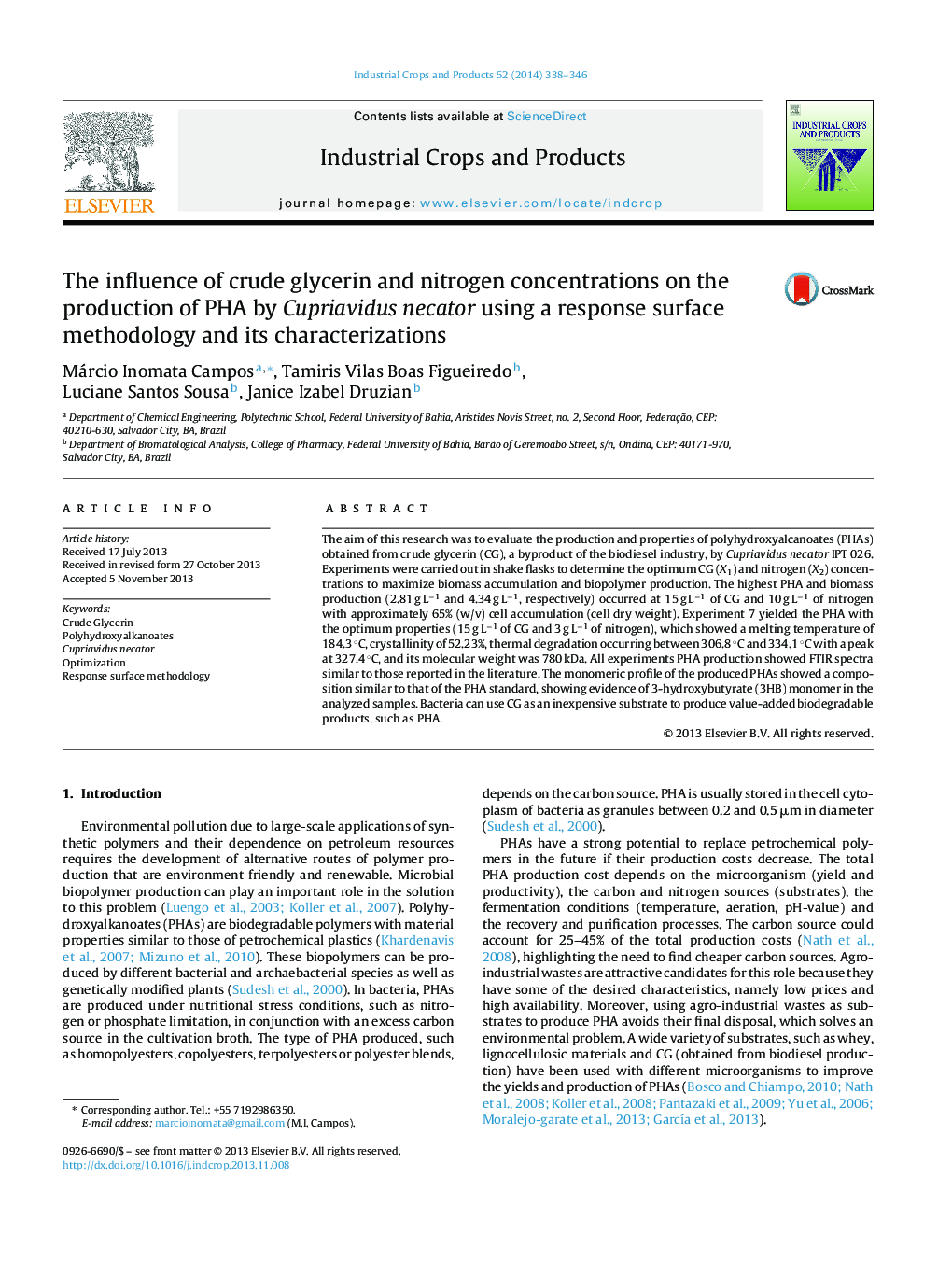| Article ID | Journal | Published Year | Pages | File Type |
|---|---|---|---|---|
| 4513474 | Industrial Crops and Products | 2014 | 9 Pages |
•Polyhydroxyalkanoates was obtained from crude glycerol.•Different concentrations of crude glycerol and nitrogen were tested in the experimental design.•High concentration of crude glycerol results in low PHA production.•The polyhydroxyalkanoates produced showed excellent thermal properties.•The polyhydroxyalkanoates produced showed monomeric composition varied.
The aim of this research was to evaluate the production and properties of polyhydroxyalcanoates (PHAs) obtained from crude glycerin (CG), a byproduct of the biodiesel industry, by Cupriavidus necator IPT 026. Experiments were carried out in shake flasks to determine the optimum CG (X1) and nitrogen (X2) concentrations to maximize biomass accumulation and biopolymer production. The highest PHA and biomass production (2.81 g L−1 and 4.34 g L−1, respectively) occurred at 15 g L−1 of CG and 10 g L−1 of nitrogen with approximately 65% (w/v) cell accumulation (cell dry weight). Experiment 7 yielded the PHA with the optimum properties (15 g L−1 of CG and 3 g L−1 of nitrogen), which showed a melting temperature of 184.3 °C, crystallinity of 52.23%, thermal degradation occurring between 306.8 °C and 334.1 °C with a peak at 327.4 °C, and its molecular weight was 780 kDa. All experiments PHA production showed FTIR spectra similar to those reported in the literature. The monomeric profile of the produced PHAs showed a composition similar to that of the PHA standard, showing evidence of 3-hydroxybutyrate (3HB) monomer in the analyzed samples. Bacteria can use CG as an inexpensive substrate to produce value-added biodegradable products, such as PHA.
